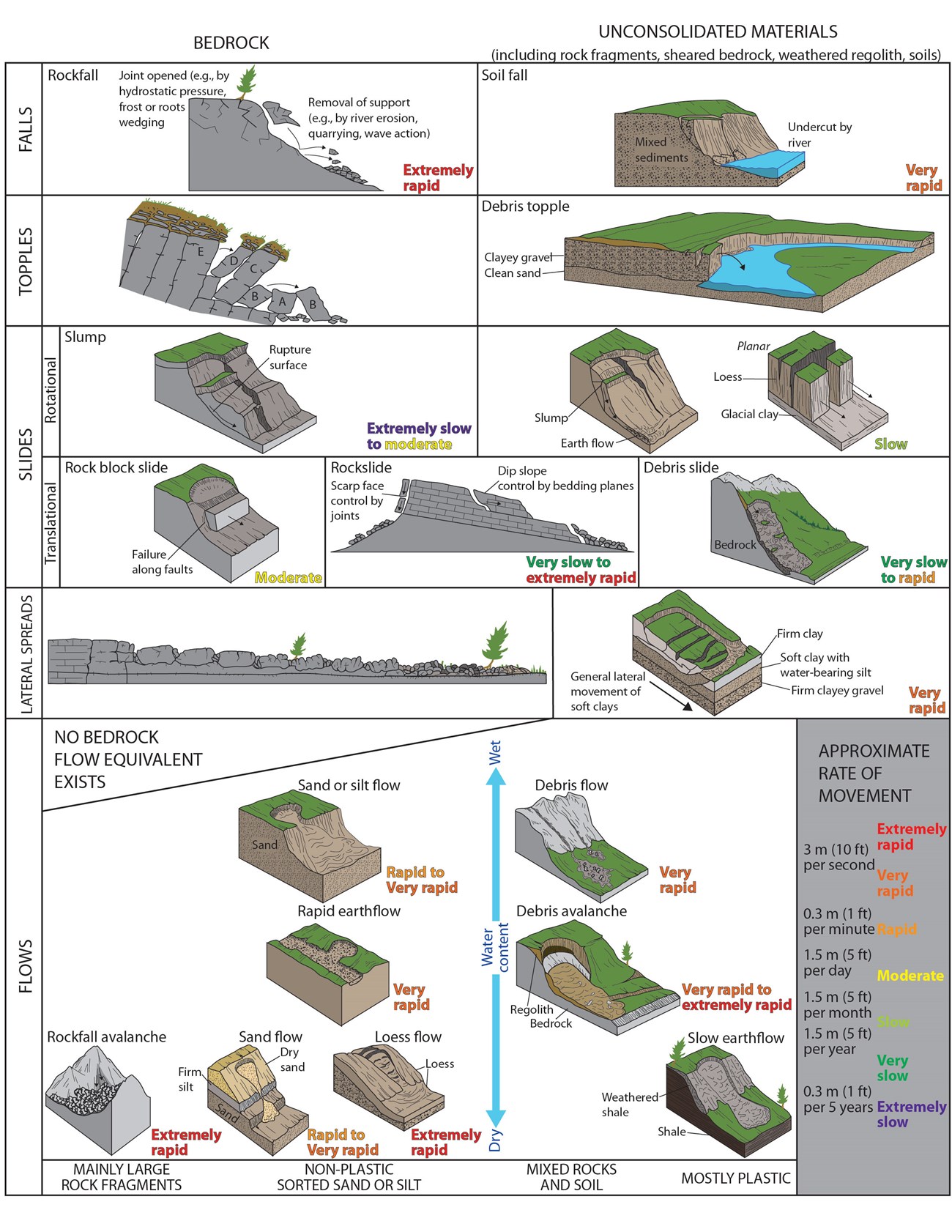Landslides include a wide range of phenomena involving downslope ground movement, such as rockfalls, deep slope failure, shallow debris flows, and avalanches. Gravity acting on a slope is the primary cause of landslides, but there are other important and dynamic factors that serve as triggers.
- Saturation of slopes by precipitation (rain or snowmelt) weakens soil and rock by reducing cohesion and increasing the pressure in pore spaces, pushing grains away from each other.
- Erosion and undercutting of slopes by streams, rivers, glaciers, or waves increase slope angles and decrease slope stability.
- Earthquakes create stresses that weaken slopes and physically cause slope movement.
- Perhaps most significant from a management perspective, the over weighting, and/or under cutting of slopes for facilities, roads, trails, mines, and other man-made structures change the natural slope equilibrium and cause slopes to fail.

Trista L. Thornberry-Ehrlich, Colorado State University modified from Varnes, D. J. 1978. Landslides: analysis and control.
Last updated: March 15, 2018
